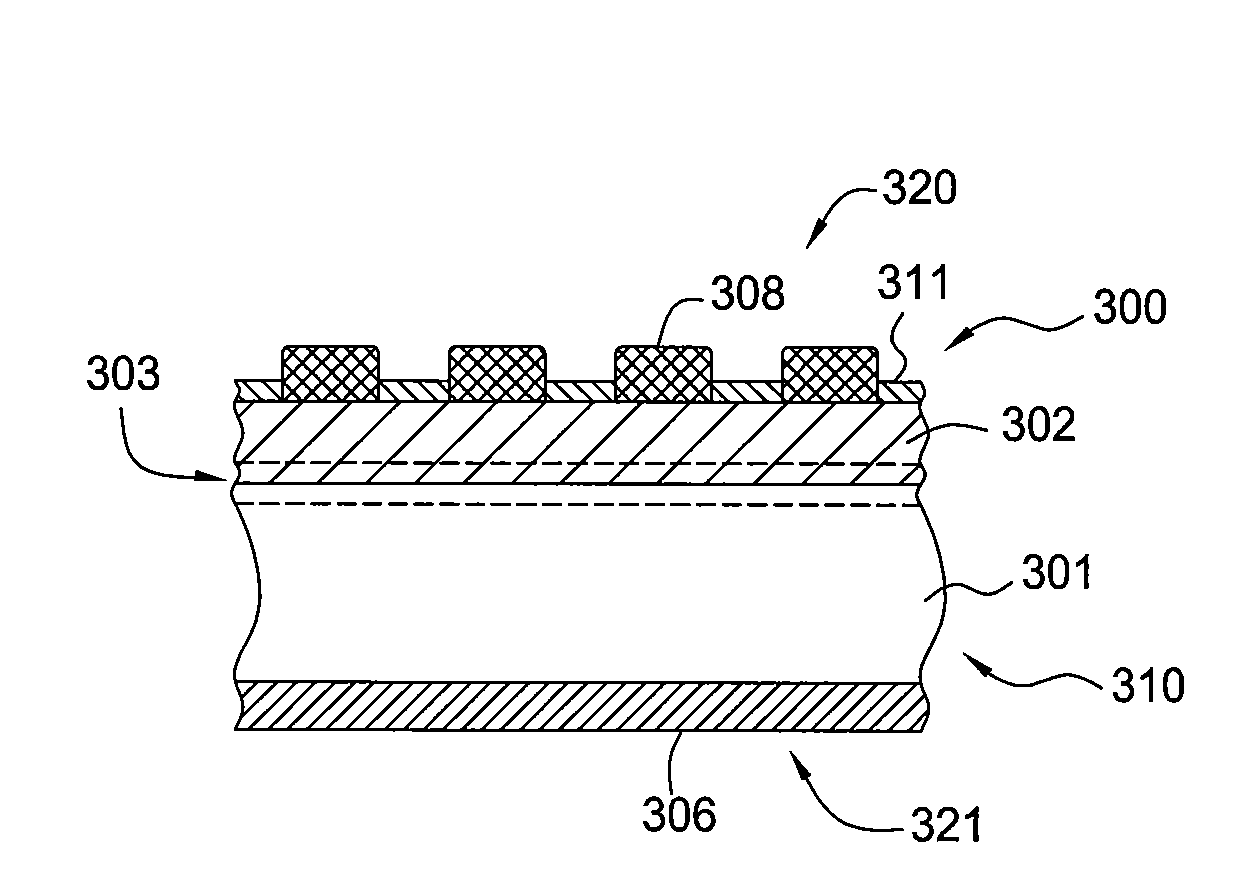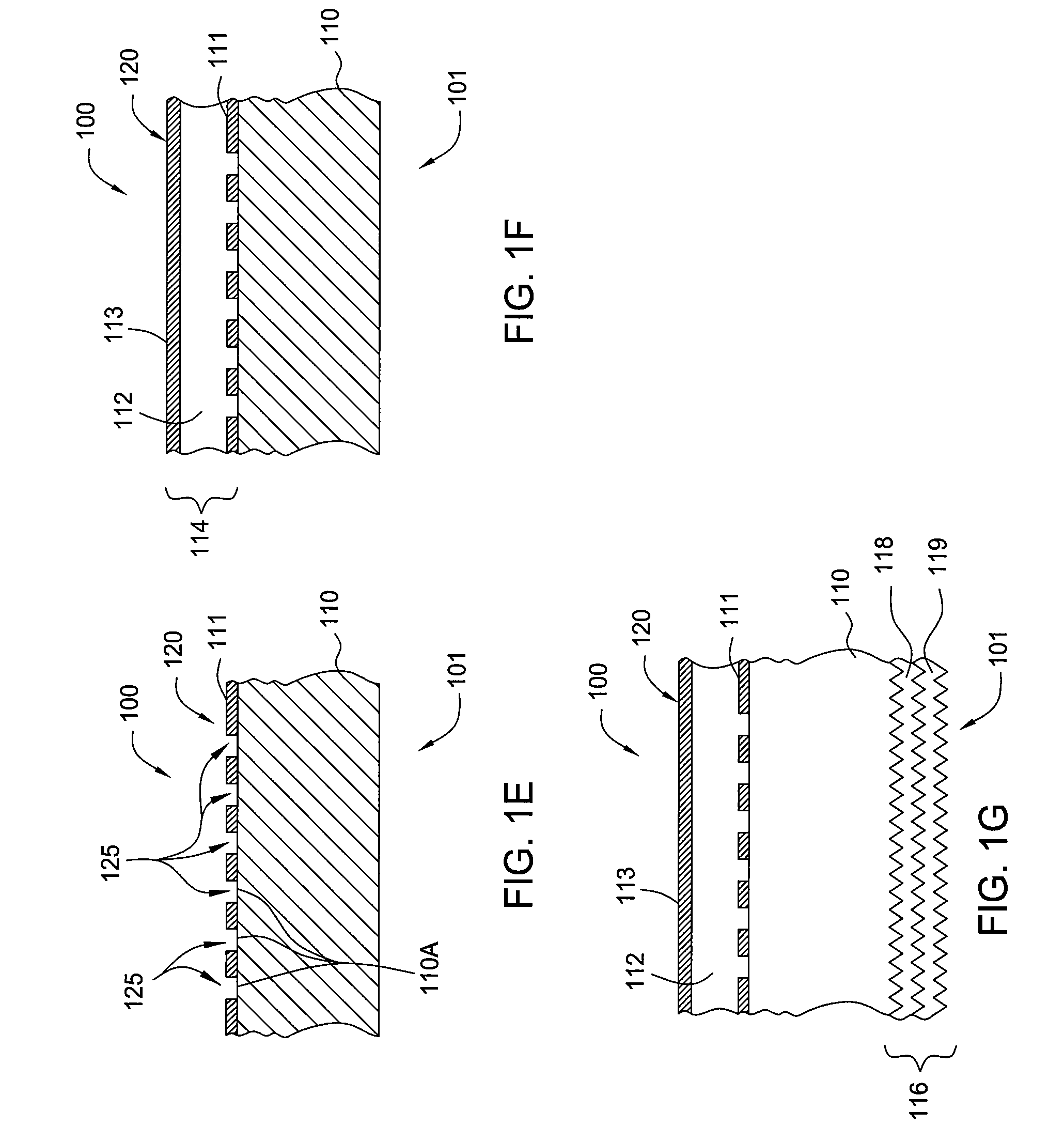Solar Cell Contact Formation Process Using A Patterned Etchant Material
a solar cell and patterned technology, applied in the direction of basic electric elements, electrical equipment, semiconductor devices, etc., can solve the problems of prior manufacturing methods and the cost of solar cell completion, and achieve the effect of improving the efficiency of solar cell production
- Summary
- Abstract
- Description
- Claims
- Application Information
AI Technical Summary
Benefits of technology
Problems solved by technology
Method used
Image
Examples
Embodiment Construction
[0018]Embodiments of the invention contemplate the formation of a high efficiency solar cell using novel methods to form the active region(s) and the metal contact structure of a solar cell device. In one embodiment, the methods include the use of various etching and patterning processes that are used to define point contacts through a blanket dielectric layer covering a surface of a solar cell substrate. The method generally includes depositing an etchant material that enables formation of a desired pattern in a dielectric layer through which electrical contacts to the solar cell device can be formed. Various techniques may be used to form the active regions of the solar cell and the metal contact structure. Solar cell substrates (e.g., substrate 110 in FIG. 1A) that may benefit from the invention include flexible substrates that may have an active region that contains organic material, single crystal silicon, multi-crystalline silicon, polycrystalline silicon, germanium (Ge), gall...
PUM
 Login to View More
Login to View More Abstract
Description
Claims
Application Information
 Login to View More
Login to View More - R&D
- Intellectual Property
- Life Sciences
- Materials
- Tech Scout
- Unparalleled Data Quality
- Higher Quality Content
- 60% Fewer Hallucinations
Browse by: Latest US Patents, China's latest patents, Technical Efficacy Thesaurus, Application Domain, Technology Topic, Popular Technical Reports.
© 2025 PatSnap. All rights reserved.Legal|Privacy policy|Modern Slavery Act Transparency Statement|Sitemap|About US| Contact US: help@patsnap.com



